Are you a fitness enthusiast? And have been consistently working on getting a stronger, sculpted, and thicker thigh; however, the quest is never ending and retarding too. Now worry no more; we have covered you with this comprehensive guide to address your queries.
Whether you’re an athlete striving to enhance lower body strength or someone seeking to build muscle mass, everyone has the same question: How to build thicker thighs?
While genetics play a role in determining one’s body composition, incorporating the right exercises into your fitness routine can help you achieve your desired results.
This comprehensive guide will delve into how to get thicker thighs and unveil eight game-changing exercises designed to help you get those enviable thighs.
With consistent effort and proper form, you can transform your lower body and elevate your fitness journey to new heights; without further delay, let’s get started!
Working on the Thighs: Better, Bigger, and Thicker
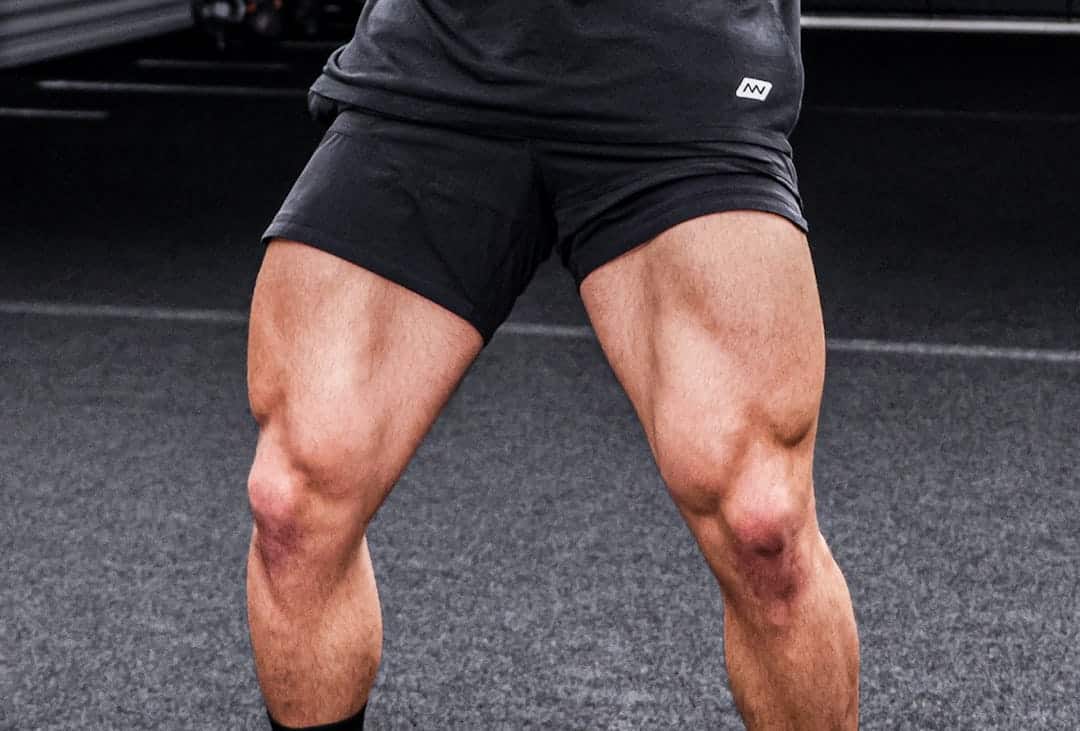
Everyone wants thicker thighs, but what do they do? Thicker thighs not only enhance your physical appearance but also provide functional benefits.
Strong thigh muscles contribute to improved lower body stability and support daily movements, such as walking, climbing stairs, or engaging in athletic activities.
They also help in delaying the degenerative changes that come along with aging.
How to Do the Workouts Help?
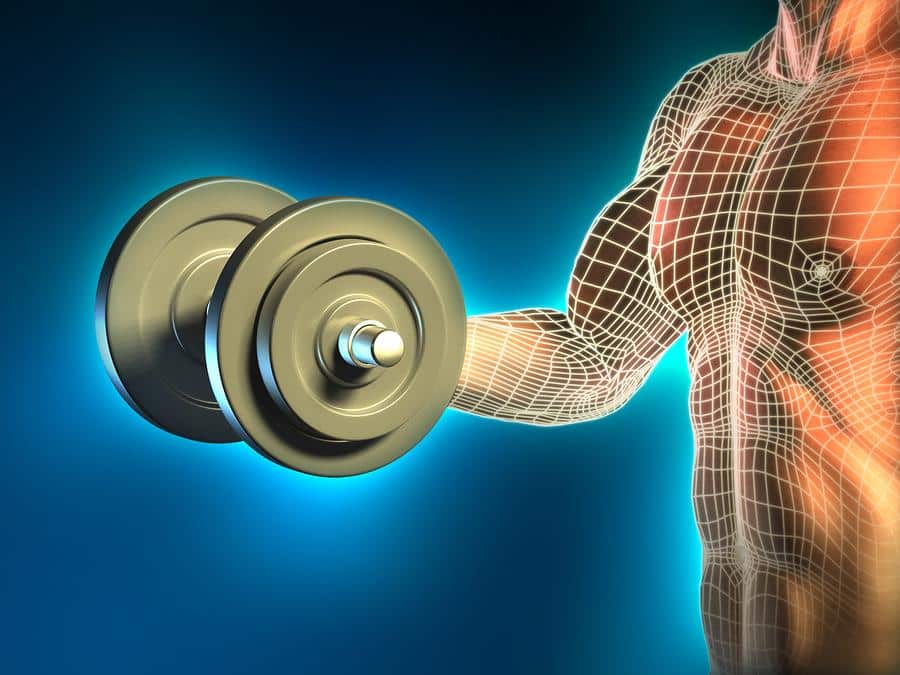
While you know why to get thicker thighs, let’s see how it works. Effective leg workouts involve a combination of compound and isolated exercises, engaging multiple muscle groups simultaneously.
Compound exercises, like squats and lunges, are fundamental in building the bulk strength of the legs, while isolated exercises, such as calf raises, target specific muscles to ensure balanced development.
Incorporating both workouts helps you create a well-rounded approach to achieving thicker thighs.
Best Workouts to Proceed with the Ideal Thighs Buildup
Having well-defined and thicker thighs is a fitness goal for many individuals. Stronger thighs contribute to improved lower body strength as well as stability.
If you want to sculpt your legs and achieve muscular thighs, we’ve got you covered with these game-changing leg workouts.
Incorporate these exercises into your fitness routine, stay consistent, and watch your thighs transform!
1. Squats: The Ultimate Leg Builder
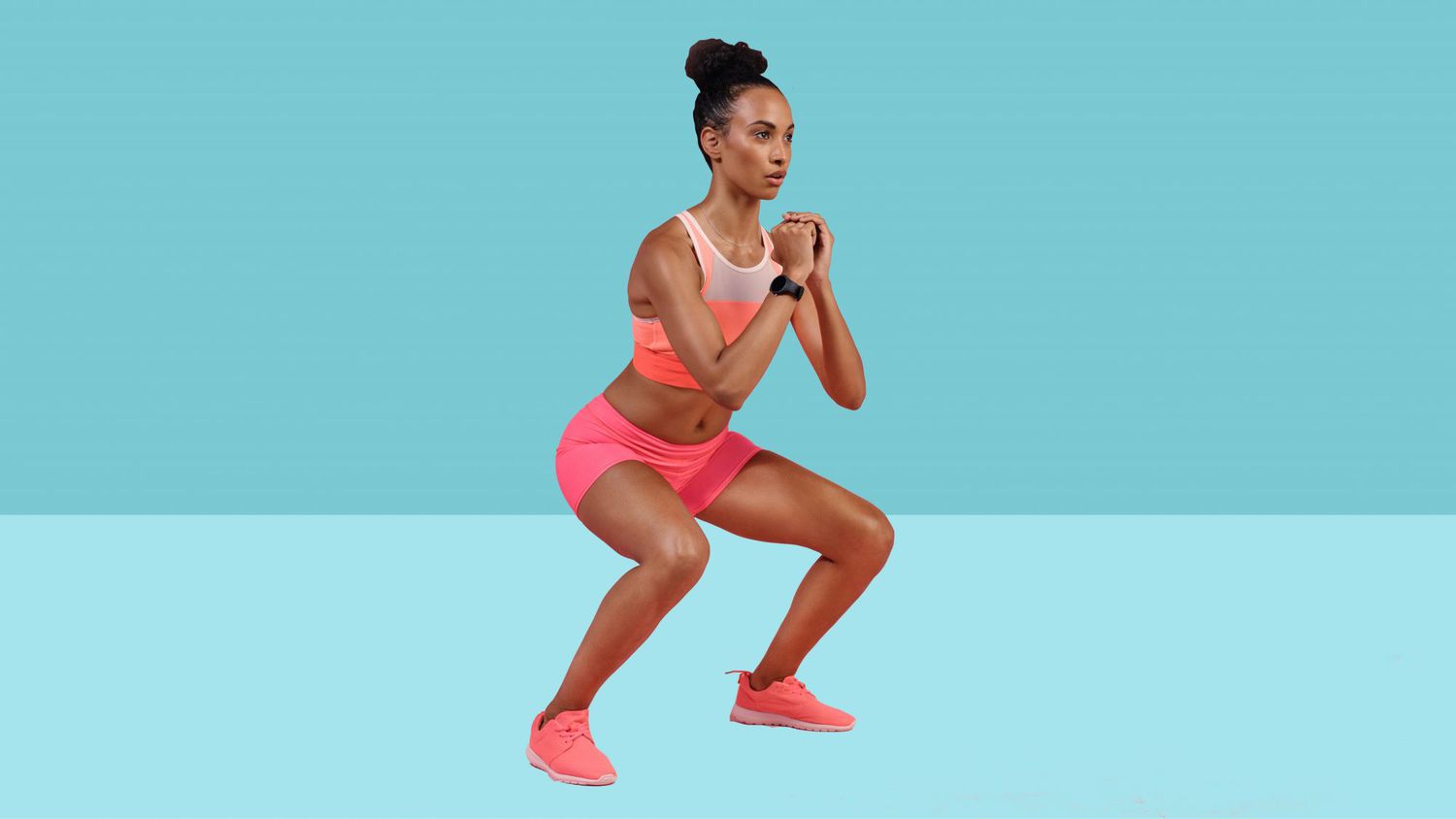
Squats are a fundamental and versatile exercise that targets multiple muscle groups in the lower body, making them an essential component of any fitness routine.
This compound movement primarily engages the quadriceps, hamstrings, and glutes, thus building thicker thighs. It also activates the core, lower back, and calf muscles.
How to Perform?
To perform a squat, stand with feet shoulder-width apart and toes slightly turned outward. Keep your chest lifted and shoulders back as you begin to bend your knees and hips, lowering your body as if you are sitting in a chair.
Your knees must be aligned with your toes and shouldn’t extend past them to keep your knees safe.
Keep your core engaged during the exercise to prevent straining your back. Aim for at least a 90-degree angle at the knee joint.
Push through your heels and squeeze your glutes to return to the starting position.
Benefits
Squats offer benefits beyond building leg strength. With their multi-joint movement, they target multiple muscles at the same time. Squats can be modified to target different muscle groups and increase resistance.
- They enhance lower body mobility and balance.
- Improve functional fitness for everyday movements like walking, bending, and lifting.
- Squats stimulate the release of growth hormone and testosterone, promoting overall muscle growth and body composition improvement.
- Remember to do bodyweight squats and gradually increase resistance as you gain strength.
2. Bulgarian Split Squats: Isolated Builder
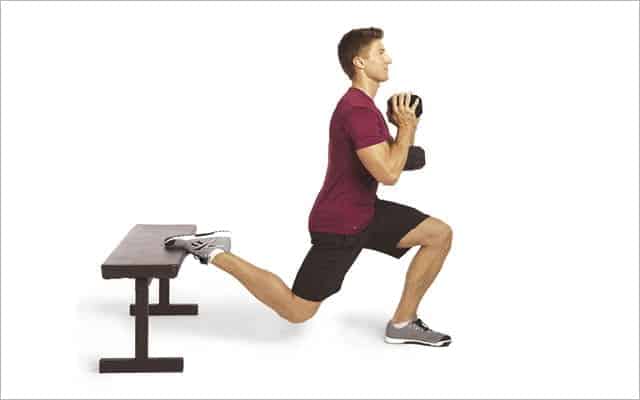
Bulgarian Split Squats are a highly effective single-leg exercise that targets the quadriceps, glutes, and hamstrings, making them an excellent addition to any lower-body workout routine.
This exercise is named after the Bulgarian weightlifting team, who popularised its use as a training method.
How to Perform?
To perform the Bulgarian Split Squat, start by standing a few feet away from a bench or platform—position one foot on the bench behind you while keeping the other foot firmly planted on the ground.
Maintain an upright posture and engage your core for stability. Lower your body by bending your front knee, ensuring it doesn’t go past your toes until your back knee almost touches the ground.
Benefits
A variation to traditional squats, these split squats are one of the best exercises to build glutes. The tricky position of the workout targets the stability of your core and the strength of your muscles.
The Bulgarian Split Squat provides several benefits-
- Improves balance, stability, and coordination.
- Since it isolates one at a time, it helps identify and correct any muscular imbalances.
- This exercise engages the stabilizer muscles in your hips and knees, contributing to better overall lower body strength and joint health.
3. Leg Press: Targetting the Whole Body

The leg press is a powerful and versatile resistance exercise that primarily targets the muscles of the lower body, including the quadriceps, hamstrings, and glutes, and builds thicker thighs.
It is performed using a leg press machine, which involves pushing a weight sled away from your body using your legs.
How to Perform?
To execute the leg press, sit on the machine with your back against the padded support and your feet hip-width apart on the platform. Adjust the seat and weight according to your comfort level.
With your knees bent at a 90-degree angle, push the platform upward by extending your knees and hips until your legs are almost fully extended but not locked.
Benefits
The leg press offers numerous benefits. They are available at every gym and are easy to perform. Make sure you start with lighter weights and move your way up gradually.
Avoid locking knees at the end of the range, as it increases the risk of injury.
- It allows lifting heavy weights safely, making it an effective tool for building lower body strength and muscle mass.
- The leg press provides variety in your workout routine, targeting muscles differently from other leg exercises like squats or lunges.
- It can also benefit those recovering from injuries or with limitations in performing traditional squat movements.
4. Deadlifts: For Stronger Hamstrings
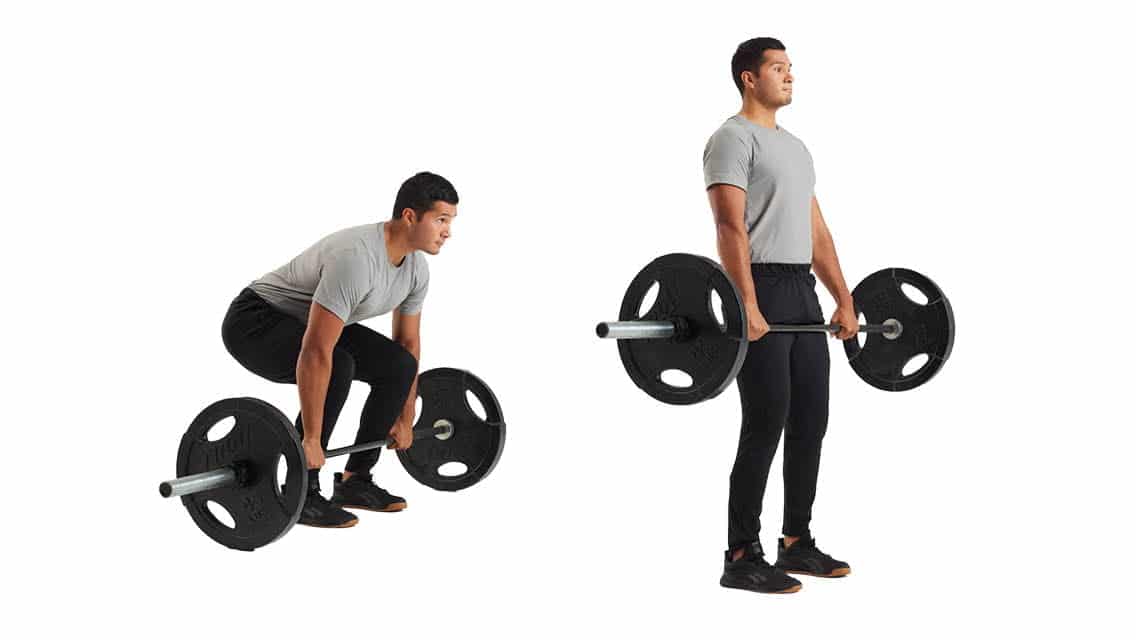
Deadlifts are fundamental and compound strength exercise that targets multiple muscle groups of the legs and core. This classic movement involves lifting a barbell or weight from the ground to a fully upright position, making it an essential component of any strength training regimen for thighs.
How to Perform?
To perform a deadlift, stand with your feet shoulder-width apart and the barbell in front of you. Bend at the hips and knees to grip the barbell with an overhand or mixed grip.
Keep your back straight, chest lifted, and shoulders pulled back. Engage your core and lift the barbell by extending your hips and standing upright, maintaining a neutral spine throughout the movement.
Benefits
Deadlifts have numerous benefits other than building muscular and thicker thighs. It works core and legs together, so back injury is relatively common during deadlifts.
Do not arch your back while you perform deadlifts.
- They enhance overall muscle development, promote better posture, and strengthen the muscles around the spine.
- Deadlifts engage the muscles in your grip, forearms, and upper back, improving grip strength and upper body stability.
5. Step-Ups: Activate the Thigh Muscles
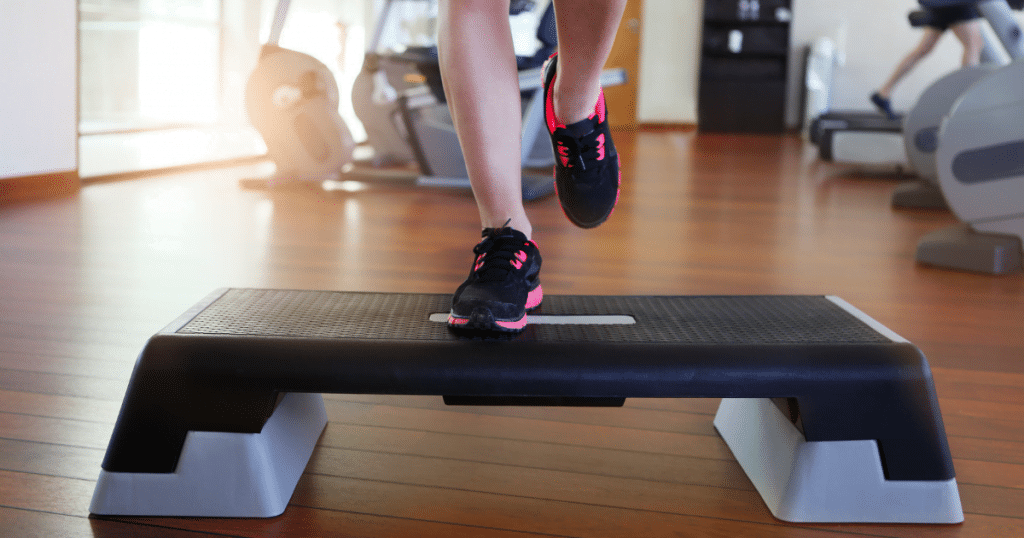
Step-ups are a highly effective lower body exercise that targets all the leg muscles. This versatile movement mimics the action of climbing stairs or stepping onto an elevated surface, making it a practical exercise for daily functional movements.
How to Perform?
To perform step-ups, you’ll need a sturdy bench, box, or platform.
Begin by placing one foot firmly on the bench, ensuring your knee is directly above your ankle. Push through your heel to lift your body onto the bench, fully extending your hip and knee.
Step back down with control and repeat the movement with the opposite leg.
Benefits
Step-ups have several benefits beyond muscle engagement. They can be done easily at home with a sturdy stool and minimal weights. Do not use a stool with an unstable build because the stool will take up your whole weight and might break.
- They help correct muscular imbalances between legs, improve lower body stability, and enhance coordination.
- This exercise is particularly beneficial for individuals rehabilitating from knee injuries or seeking to strengthen their legs without putting excessive strain on the joints.
6. Lunges: Dynamic Leg Workout
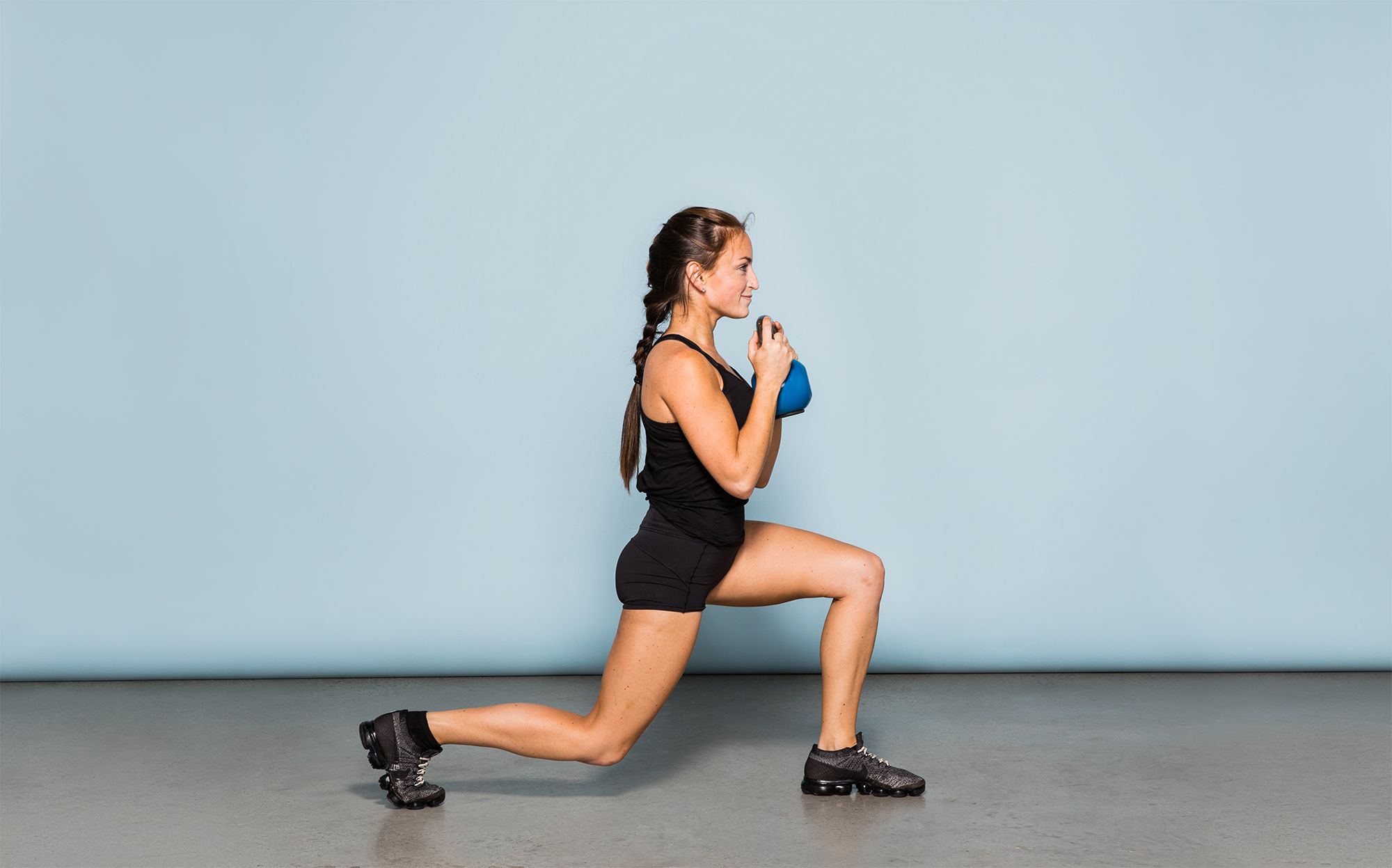
Lunges are a versatile and effective lower body exercise that builds thicker thighs. This requires good balance and strength in both legs. Lunges can be performed in various directions and with different variations to provide a well-rounded leg workout.
How to Perform?
To perform a basic lunge, start by standing tall with your feet together. Take a step forward or backward with one leg, lowering your body until both knees are bent at approximately 90-degree angles.
Keep your front knee aligned with your ankle and ensure your back knee hovers slightly above the ground. Push through your front heel to return to the starting position and repeat on the other leg.
Benefits
Like squats, lunges can be made in various ways, like forward, backward, and side lunges. They target different muscle groups; curtsy lunges are an advanced form but great for building leg strength.
Lunges build great muscle engagement and provide other benefits like-
- Enhancing lower body strength and getting rid of imbalances.
- Lunges also engage your core muscles for stability and contribute to better hip flexibility.
- Add weights gradually to increase resistance.
7. Glute Bridges: Grow the Flutes
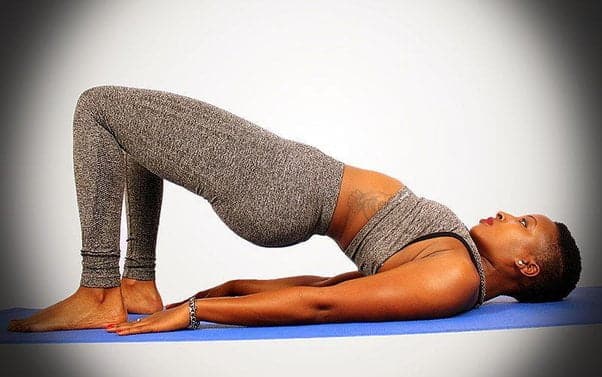
Glute bridges are a highly effective lower body exercise designed to target and activate the gluteal muscles, particularly the gluteus maximus. Glute bridges are renowned for their ability to strengthen and shape the buttocks while also engaging the hamstrings and lower back muscles.
How to Perform?
To perform a glute bridge, lay on your back with your knees bent and feet flat on the ground. Place your arms by your sides, palms facing down. Press through your heels and lift your hips towards the ceiling, forming a straight line from your shoulders to your knees.
Use a squat pad for safety. Squeeze your glutes at the top of the movement, then lower your hips with control.
Benefits
An easy exercise, if done properly, targets gluts effectively. Keep your feet under your knees to target hip muscles, as keeping them forward will work your quadriceps more than your hip muscles.
Glute bridges do a lot of work other than muscle activation.
- They can help alleviate lower back pain by strengthening the muscles that support the spine.
- Additionally, glute bridges contribute to better hip mobility and improved posture.
- To intensify the exercise, you can incorporate variations such as single-leg glute bridges or hip thrusts using a bench.
- Resistance bands or weights can also be added for an extra challenge.
8. Calf Raises: Build Stronger Calves
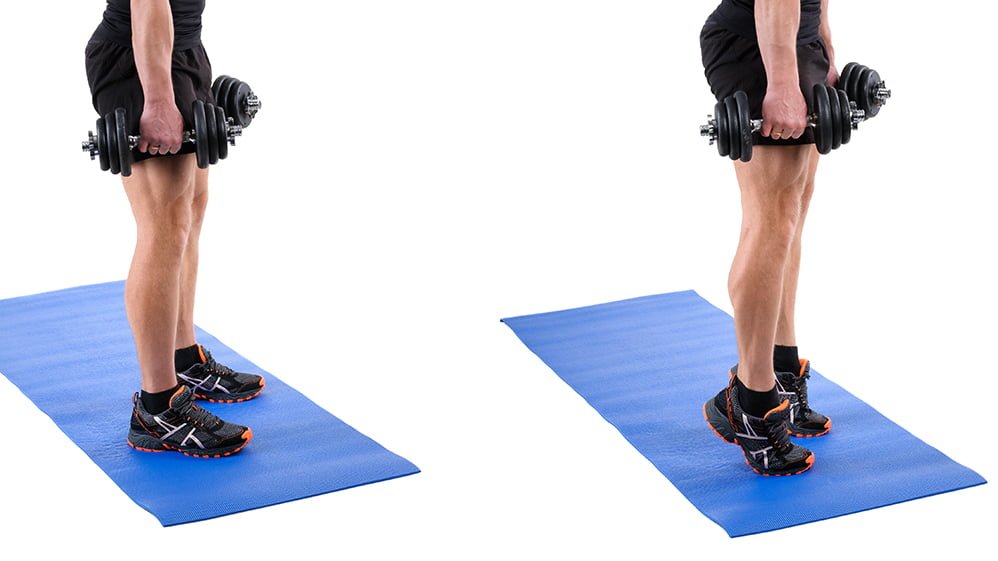
Calf raises are a simple yet effective exercise that primarily targets the calf muscles, specifically the gastrocnemius and soleus. These muscles are located on the back of your lower legs and are crucial in ankle stability, walking, and building thicker thighs.
How to Perform?
To perform calf raises, stand upright with your feet hip-width apart. You can exercise with body weight or by holding onto a stable surface, such as a wall or a sturdy piece of furniture, for balance.
From this starting position, push through the balls of your feet to lift your heels off the ground, rising onto your toes as high as possible. Slowly lower your heels back down to the ground and repeat the movement.
Benefits
Built calves give a pleasing look to your legs and are important to train along with thighs. With a small stool, you can use your body weight to do them effectively. Calf raises are one of the best exercises for muscle engagement.
- They can help improve calf muscle strength, enhance ankle stability, and improve overall lower body function.
- Strong calf muscles are crucial for running, jumping, and even walking, providing power for pushing off the ground.
Essential Tips to Adhere While Working Out
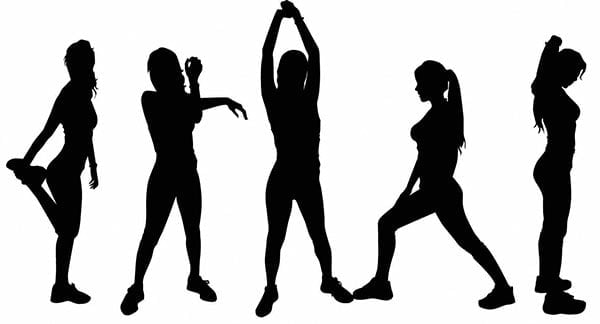
An effective leg workout is crucial for building thicker thighs, improving functional fitness, and achieving balanced muscle development. To maximize your leg training and ensure safety, consider these important tips-
- Warm-Up: Always start with a thorough warm-up to increase blood flow to your muscles and prepare them for exercise. Dynamic stretches and light cardio can help reduce the risk of injury and bring the body to an optimal temperature before exercising.
- Proper Form: Focus on maintaining proper form throughout your leg exercises. This includes keeping your core engaged, back straight, and knees aligned with your toes. Improper form increases the risk of injury and can decrease the workout’s effectiveness.
- Progressive Overload: Gradually increase the weight or resistance you use for each exercise. This progressive overload stimulates muscle growth and strength development over time. Resistance bands and dumbbells can be incorporated into any exercise easily.
- Full Range of Motion: Perform exercises through their full range of motion to engage muscles fully and improve flexibility. For example, squatting to 90 degrees is the most effective way to do squats. You can work slowly towards achieving a full range of exercise.
- Compound Movements: Multi-joint movements like squats and deadlifts engage multiple muscle groups simultaneously, leading to more efficient and effective workouts for building thicker thighs. Maintain a balance between compound and isolated exercises for enhanced effectiveness.
- Isolation Exercises: Include isolation exercises like leg extensions and hamstring curls to target specific muscles. These exercises can help correct muscle imbalances and add variety to your routine. It also builds the strength of each muscle effectively.
- Rest and Recovery: Allow sufficient rest between sets and workouts to prevent overtraining. Muscles need time to repair and grow, so aim for at least 48 hours of recovery between intense leg sessions. Don’t exercise if you suffer from any pain.
- Nutrition and Hydration: Proper nutrition and hydration are vital for fueling your workouts and supporting muscle recovery. Keep yourself hydrated between workouts to avoid fatigue. Eating proper proteins plays a major role in building thicker thighs.
- Stretching: Include static stretching at the end of your workout to improve flexibility and reduce muscle soreness. Hold each stretch for 30 seconds for the best benefit. It helps in recovering the muscle from a heavy workout.
- Listen to Your Body: Pay attention to your body’s signals. If an exercise causes pain or discomfort, it’s essential to avoid pushing through pain. Take proper rest or check if your form is correct because that is one of the primary reasons for back pain.
Conclusion
Achieving thicker thighs is a realistic and attainable goal through a consistent and well-structured leg workout regimen.
The eight game-changing leg exercises detailed in this article provide a comprehensive approach to how to get thick thighs.
Combining compound movements like squats and deadlifts, along with targeted isolation exercises like lunges and leg presses, you can effectively target the quadriceps, hamstrings, glutes, and calves. The journey to thicker thighs requires dedication, patience, and proper form.
It’s important to listen to your body and avoid overtraining, as allowing ample time for recovery is key to preventing injury and maximizing results.
Whether you’re aiming for enhanced athletic performance, greater lower body strength, or a more aesthetically pleasing physique, these game-changing leg workouts can serve as your guide to achieving the thicker thighs you desire.
Embrace the journey, stay committed, and enjoy the process of sculpting stronger and more muscular legs.




